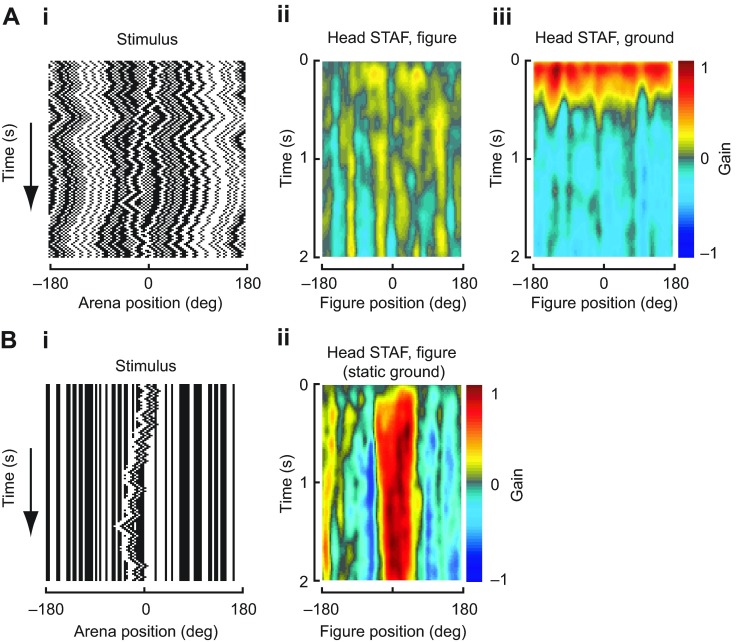Fig. 5.
Head-movement STAFs. These STAFs are calculated using the same methods as the wing STAFs shown in Fig. 5, but show correlations between stimulus motion and head angle rather than correlations between stimulus motion and wing steering. (A) Figure and wide-field head STAFs. (i) Space–time plot of a sample stimulus used to construct the STAF, with figure and wide-field panorama moving according to two random sequences; (ii) head STAF of responses to figure motion; (iii) head STAF of responses to wide-field motion. In contrast to wing-steering figure and wide-field STAFs, the fly's responses are limited to the wide-field stimulus, with no response to the figure stimulus, and are uniform over the visual azimuth. N=25 flies. (B) Head STAF for a figure moving on a static wide-field panorama (N=13 flies). (i) Space–time plot of figure stimulus moving on a static wide-field panorama; (ii) head STAF of responses to figure motion. When the wide-field panorama is static, the head movements are correlated with figure motion while the figure is in the frontal field of view.

